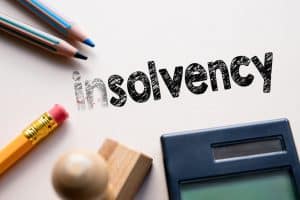
This is because buyers are typically only interested in acquiring items at a discount, knowing that the company is in financial trouble. As a result, liquidation can often lead to significant losses for shareholders and creditors alike.
However, in some cases it may be the best option for all parties involved. When a company is facing insolvency, liquidation may be the only way to prevent further losses and give creditors a chance to recoup some of their investment
Why a company would liquidate
A company may liquidate for a variety of reasons, including bankruptcy, financial difficulties, or a shift in business strategy. In a voluntary liquidation, the company’s shareholders vote to sell off the company’s assets and dissolve the business. This decision is often made in an effort to maximize value for shareholders.
An involuntary liquidation occurs when a company’s creditors force it into insolvency. This may happen if the company is unable to repay its debts or if its assets are not sufficient to cover its liabilities. Once a company is in bankruptcy, its assets are sold off and the proceeds are used to pay creditors. Any remaining funds are distributed to shareholders. Liquidation can be a difficult process for all involved parties, but it may be the best way to protect shareholder value.
The three kinds of liquidation
There are three different types of liquidation in the UK. For each of the types of liquidation outlined below, there is a specific process that must be followed:
Members’ voluntary liquidation
A members’ voluntary liquidation (MVL) is a process used by solvent companies in the United Kingdom to wind up their affairs and distribute their assets to shareholders. The process is overseen by a licensed insolvency practitioner, and shareholders must vote in favor of the MVL before it can proceed.
Once the MVL is approved, the company’s directors will appoint the insolvency practitioner as liquidator. The liquidator will then oversee the sale of the company’s assets and distribute the proceeds to shareholders. The MVL process can be used to wind up a company in an orderly manner, and it can also be used to ensure that shareholders receive a fair return on their investment.
Creditors’ voluntary liquidation
A creditors’ voluntary liquidation (CVL) is a process whereby a company is wound up by its creditors. This type of liquidation is usually only used as a last resort, when all other options for rescuing the company have been exhausted. The CVL process begins when the directors of the company petition the court to appoint a liquidator.
Once the liquidator has been appointed, they will take control of the company’s assets and begin the process of paying off its debts. The CVL process can be a lengthy and complicated one, and it is important to seek professional advice before embarking on it. However, if it is the only way to save your company from insolvency, it can be a very effective tool.
Compulsory liquidation
Compulsory liquidation is a legal process that forces a company to wind up its affairs and sell off its assets to repay its debts. The process is usually initiated by the company’s creditors, who petition the court for an order to liquidate the company. Once an order is granted, an official receiver is appointed to oversee the liquidation process.
The receiver will gather the company’s assets, sell them off, and use the proceeds to pay off creditors. If there are any funds left over, they will be distributed to the company’s shareholders. The whole process can take months or even years to complete, and it often results in the loss of jobs and businesses.
The role of the liquidator
The role of a liquidator is to oversee the close of an insolvency or solvent company, liquidate its assets and return a distribution to creditors. A liquidator is an individual or firm who is appointed to wind up the affairs of a company by realising its assets and distributing the proceeds to its creditors. Liquidators can be either voluntary or compulsory.
Voluntary liquidators are appointed by the directors of a company, while compulsory liquidators are appointed by the court. The role of the liquidator is to ensure that all debts of the company are paid and that any surplus assets are distributed to the shareholders. In some cases, the liquidator may also be responsible for investigating the affairs of the company and reporting any wrongdoing to the relevant authorities.
Whether voluntary or compulsory, the appointment of a liquidator marks the end of a company’s existence. As such, it is a serious matter that should not be undertaken lightly.
Specific duties of the liquidator will include:
-
Assessing the company’s debts and deciding which should be repaired in full or in part
-
Ending any outstanding contracts or legal disputes
-
Ensuring a fair value for the companies assets to ensure the maximum return for creditors
-
Informing creditors of proceedings and involving them in decisions when appropriate
-
Ensuring an distribution of funds to creditors
-
Filing reposts to creditors on the reasons for the liquidation
-
Dissolving the company at Companies House
Seasoned professional with a strong passion for the world of business finance. With over twenty years of dedicated experience in the field, my journey into the world of business finance began with a relentless curiosity for understanding the intricate workings of financial systems.
